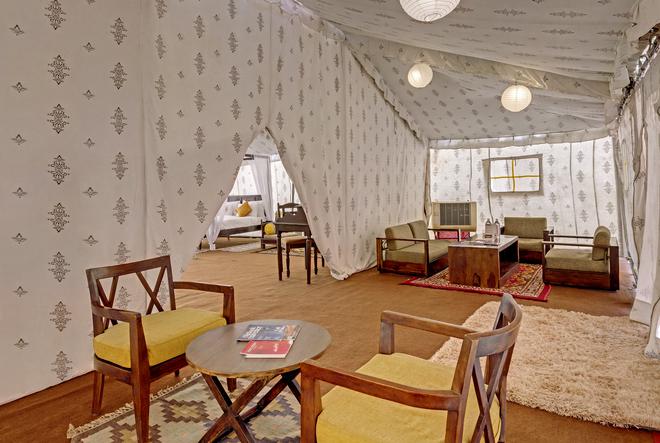The sun sank on a sandy horizon along the butter-smooth road from Bhuj Airport in Kutch district of Gujarat to Tent City in Dhordo village on a December evening. The 85-kilometre journey to the venue of Tourism Corporation of Gujarat’s annual flagship desert festival, Rann Utsav, introduced a landscape dotted with shrubs, occasional trees, a small stream and a long string of transmission towers — the Banni Grasslands Reserve. The tour guide, Shankar, gave a taste of what is in store as he pointed to the eponymous Banni buffaloes of the grasslands, and quipped, “Had I owned one of these, I wouldn’t be working.”
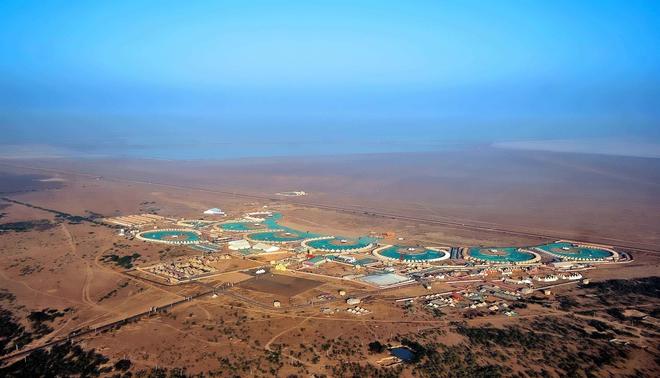
In addition to the bovine spotting, the 17th edition of the festival intends to acquaint visitors to the culture, ecology and history of Kutch. The Tent City comprises clusters of tents — from regular accommodations to a bullet-proof tent reserved for the Prime Minister. Helmed by Tent City operators Evoke Experiences on a PPP (Public Private Partnership) model, the venue offers 450 tents, a spa, an art gallery, shopping stalls, and an activity centre which hosts cultural performances every evening for Tent City guests and tourists looking for entertainment. There are folk dances Garba, Bhavai, performed by Rajendra Reval, and Siddhi Dhamal, performed by the Siddhi people of African descent.
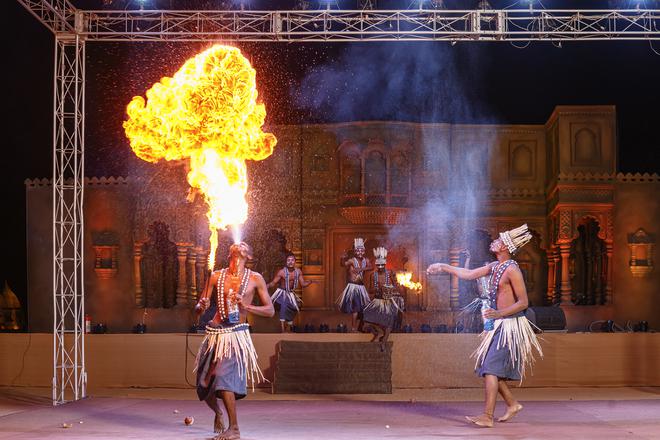
Milk tourism
Banni buffaloes are quite the equivalent of Punjab and Haryana’s Murrah from how Shankar explains their worth in terms of milk production and financial reputation. He halts at Mewa Tea Stall, some 30 kilometres from Tent City, and boasts of Kutch’s special mewa, a sweet dish made from Banni buffalo milk. It tastes like milk cake, only crumbled, stickier and sweeter.
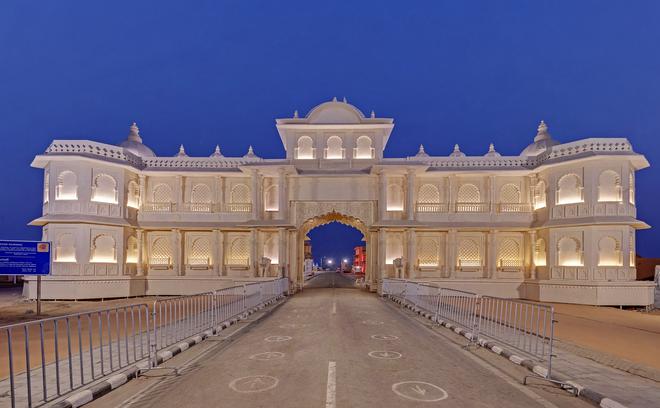
The palatial, pristine-white and gated entrance to Tent City leads visitors to the reception area, surrounded by Kutch’s traditional art workshops and stalls, about 40 of them, selling handicraft goods. “Evoke Experiences has been appointed to operate Tent City since 2013. We will raze all structures when the festival culminates on February 25 and then return some months later,” shares Bhavik Sheth, chief operating officer, Evoke Experiences. “We have hosted 15,000-16,000 visitors from November 10 to the first week of December, and expect at least 25,000 more from December 10 to the end of the festival,” he adds.
Folk to fork
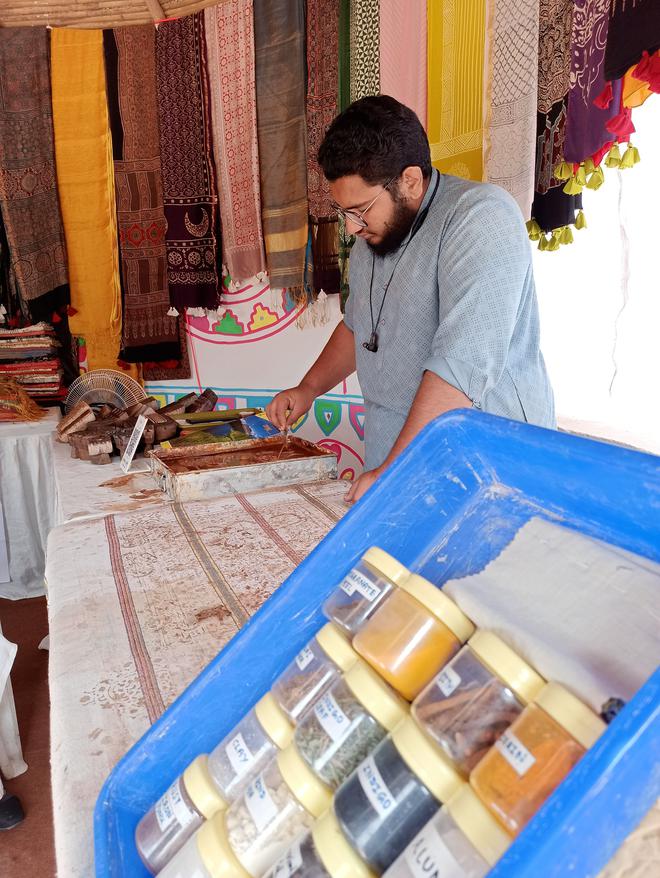
At one of the stalls, Javed Anvar Khatri, a seventh generation ajrak artist from Kutch’s Ajrakpur village, is mixing lime powder and acacia gum while placing a sponge on a sheet made with wooden sticks. “Ajrak is a form of block-printing art, native to Arabia. Our ancestors were called from Arabia by the then king of Bhuj to practise this art form here some 700 years ago,” he says.
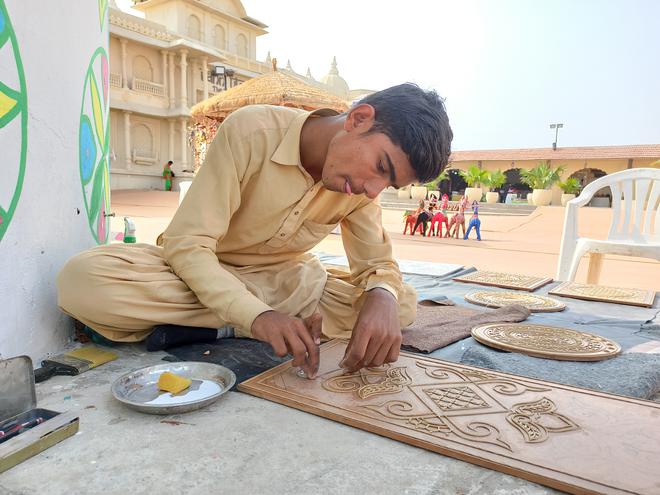
In the nearby boonga, a traditional Gujarati hut, Arshad Mir Datt is stacking MDF plywood blocks to adorn them with mirror art. “We mix horse dung and Kutch’s clay to make a fine paste which is stored in wet cloth. It is then moulded into a noodle-like shape to mount designs on the ply with glue. Then mirrors, hand-cut with scissors, are stuck on it. We have over 45 design patterns, inspired from the mirror art that was previously done on boongas,” he says.
Kutch embroidery, mirror work and ajrak also translate into wearable goods, especially leather bags, wallets, and footwear. There are stalls making copper bells too. Handicrafts start anywhere between ₹600 and ₹800, depending on the intricacy of work and material used.
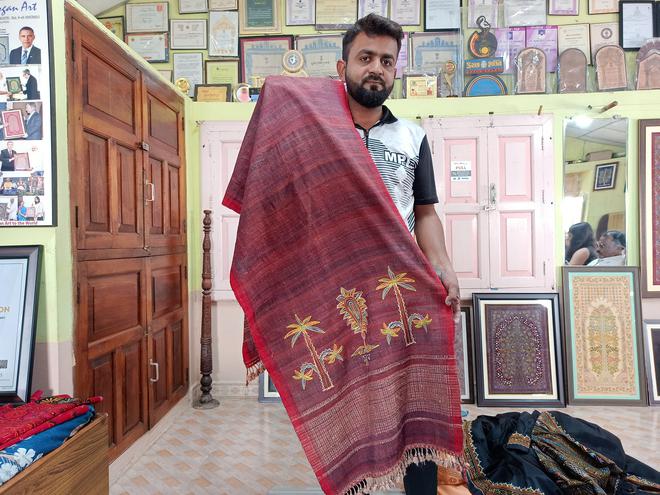
The quest for Kutch’s traditional art leads us to the quaint Nirona village, 70 kilometres from Tent City, where members of Kharti family introduce us to Rogan art. Jaffar Khatri demonstrates the textile art with a stylus and shows newspaper clippings of PM Narendra Modi expressing fondness for the art. “He also gifted it to Obama. My uncle Abdulgafur Kharti was awarded Padma Shri for restoring the art form, which would have been lost had he not returned from Mumbai in 1984 to pursue it. Ours is the only family in the world that makes it. In fact, we operate out of home and have no shop,” he says, pointing at all the Rogan art paintings, clothes and bags adorning the walls of the room. He shows his painting kit, comprising pastes of organic colours fused with castor oil gum dipped in water and explains the technique of running the paste onto the cloth, usually cotton and silk.
For foodies, the Tent City offers an array of only-vegetarian dishes. These range from dhokla, gathiya, thepla, khandvi, fafda, khichdi and khaman. “The spread offers all traditional local dishes right from a variety of kadhis, chaach, jal jeera, vegetable dishes like undhiyo, kheer, gulab barfi typical local dishes like sev ki bhaji and spicy chutneys,” shares Anil Agnihotri, operations head, Evoke Experiences.
Highway to heavenly views
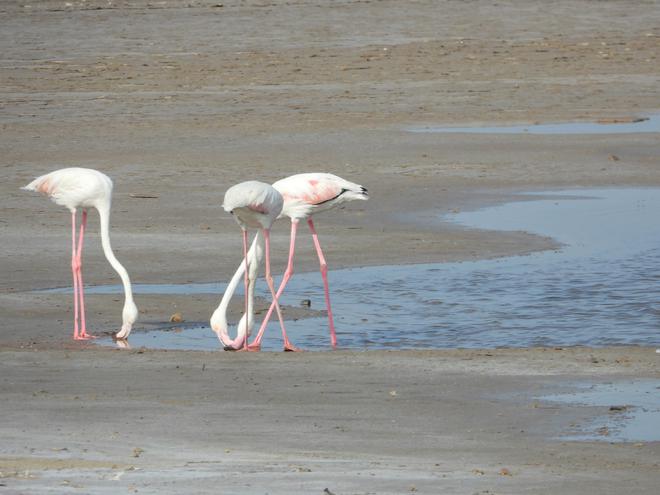
The seasonal, marshy salt pans of Kutch turn into a haven for bird watchers after November. The district hosts nearly 300 varieties of birds, from greater spotted eagles to flamingos. Some of them can be spotted en route the site of a long-lost Harrapan city in Dholavira, 88 kilometres from Dhordo. The 5,000-year-old archaeological site offers a glimpse of the lost city’s elaborate water channels, a jewellery factory, playgrounds and a three-part division as citadel, and middle and lower town.
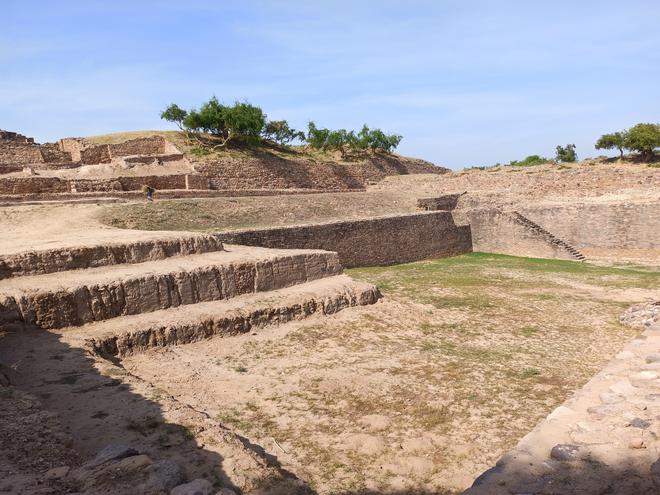
If you prefer a bird’s eye view of Kutch, head to Kalo Dungar or Kala Dungar, a hill located near Khavda town, about 48 kilometres from Dhordo. The district has also taken to astro tourism. Stargazing India is one of the operators offering an evening of space, star clusters and planets, with a guide showing the fixed star Polaris, Saturn and its ring, five of Jupiter’s 95 moons and the brightest star Sirius. Shooting stars and the Milky Way in all its glowing glory make for a breathtaking view.
While they come without non-vegetarian food and alcohol (Gujarat is a dry State), sunsets and sunrises in Kutch’s white desert, at times spoilt by littering of plastic waste, make for that perfect farewell to a holiday in India’s westernmost district.
